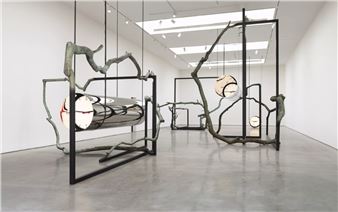The Power of the Avant-Garde
The exhibition The Power of the Avant-Garde features works which have not been shown to the Polish public before, works by great artists, regarded already as classics in art history, such as Fernand Léger, Edvard Munch, Kazimir Malevich, Piet Mondrian and Alexander Archipenko. Works produced in the first decades of the 20th century are accompanied by the contemporary ones, dialoguing with historical objects.
These include among others works by David Claerbout, Jeff Wall and Sean Scully. Thus the question arises about the relevance of the avant-garde, about its sources of inspiration and its meanings, as well as its power of influence. The exhibition is complemented by the works of Polish artists: Katarzyna Kobro, Leon Chwistek, Stanisław Ignacy Witkiewicz, Władysław ���ٰ�����ń���쾱, Andrzej Pawłowski, Marek Piasecki and the present day artists drawing inspiration from the works of the Polish avant-garde classics.
The avant-garde movements of the first quarter of the 20th century had a strong emotional, intellectual and in some cases also socio-political charge. They were usually accompanied by optimism and a belief in the possibility to reform the world (and change the man). Two world wars and the experience of the European totalitarianisms changed this view. That is why the intergenerational dialogue is not an epigonic phenomenon, though the art of the latter half of the 20th century, burdened with traumas and involved in the overexploited Postmodernist temptations or resorting to the aesthetics of camp, hardly ever musters the courage to be as authentic as avant-garde art.

Recommended for you
The exhibition The Power of the Avant-Garde features works which have not been shown to the Polish public before, works by great artists, regarded already as classics in art history, such as Fernand Léger, Edvard Munch, Kazimir Malevich, Piet Mondrian and Alexander Archipenko. Works produced in the first decades of the 20th century are accompanied by the contemporary ones, dialoguing with historical objects.
These include among others works by David Claerbout, Jeff Wall and Sean Scully. Thus the question arises about the relevance of the avant-garde, about its sources of inspiration and its meanings, as well as its power of influence. The exhibition is complemented by the works of Polish artists: Katarzyna Kobro, Leon Chwistek, Stanisław Ignacy Witkiewicz, Władysław ���ٰ�����ń���쾱, Andrzej Pawłowski, Marek Piasecki and the present day artists drawing inspiration from the works of the Polish avant-garde classics.
The avant-garde movements of the first quarter of the 20th century had a strong emotional, intellectual and in some cases also socio-political charge. They were usually accompanied by optimism and a belief in the possibility to reform the world (and change the man). Two world wars and the experience of the European totalitarianisms changed this view. That is why the intergenerational dialogue is not an epigonic phenomenon, though the art of the latter half of the 20th century, burdened with traumas and involved in the overexploited Postmodernist temptations or resorting to the aesthetics of camp, hardly ever musters the courage to be as authentic as avant-garde art.
Contact details
















